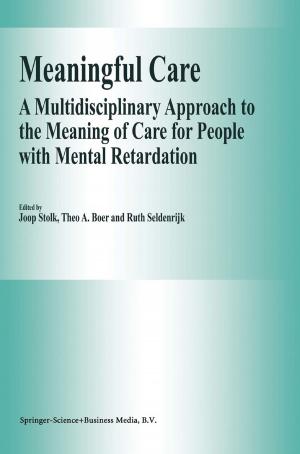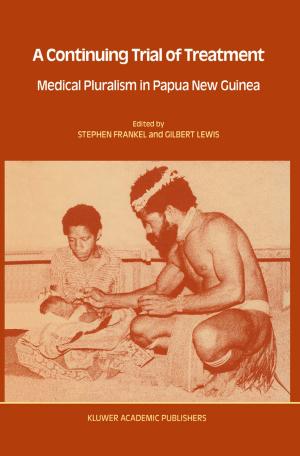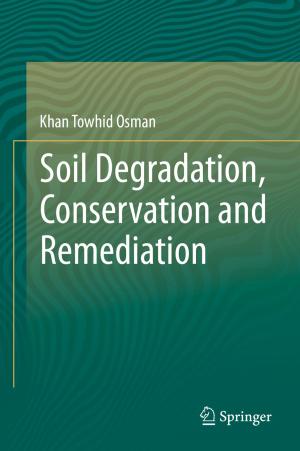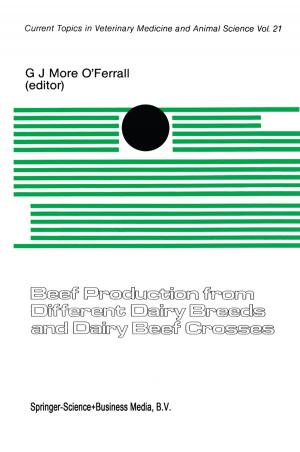Tracking Environmental Change Using Lake Sediments
Volume 2: Physical and Geochemical Methods
Nonfiction, Science & Nature, Science, Earth Sciences| Author: | ISBN: | 9780306476709 | |
| Publisher: | Springer Netherlands | Publication: | April 11, 2006 |
| Imprint: | Springer | Language: | English |
| Author: | |
| ISBN: | 9780306476709 |
| Publisher: | Springer Netherlands |
| Publication: | April 11, 2006 |
| Imprint: | Springer |
| Language: | English |
Theory Instrumentation NIR analysis of sediment samples Uses of NIRS in palaeolimnology Future perspectives Summary References Fly-ash particles. Neil Rose 319 12. Introduction A brief history Methods of extraction and enumeration Temporal distribution Spatial distribution Source apportionment The future Summary Acknowledgements References Part III: Stable Isotope Techniques 13. Application of stable isotope techniques to inorganic and biogenic carbonates. Emi Ito 351 Introduction Nomenclature and systematics of lake-water Mg/Ca and Sr/Ca ratios of lake-water of dissolved inorganic carbon (DIC) Carbonates in lake-sediments Mollusks Ostracodes Charaphytes Isotope analysis Preparation of carbonate samples for isotope analysis Conclusions Summary Acknowledgments References 14. Carbon and oxygen isotope analysis of lake sediment cellulose: methods and applications. Brent B. Wolfe, Thomas W. D. Edwards, Richard J. Elgood & Kristina R. M. Beuning 373 xi Introduction Stable isotope tracers in lake Historical development Methods Key criteria for paleohydrologic reconstruction Applications Future research directions Summary Acknowledgements References Nitrogen isotopes in palaeolimnology. Michael R. Talbot 15. 401 Introduction Nitrogen in lakes: forms and distribution Nitrogen isotopes Nitrogen isotope studies in palaeolimnology: sampling and measurement Some examples Closing remarks Summary Acknowledgments References Glossary, acronyms and abbreviations 441 Index 493 xiii PREFACE The explosive growth of paleolimnology over the past two decades has provided impetus for the publication of this series of monographs detailing the numerous advances and new techniques being applied to the interpretation of lake histories. This is the second volume in the series and deals mainly with physical and geochemical analytical techniques.
Theory Instrumentation NIR analysis of sediment samples Uses of NIRS in palaeolimnology Future perspectives Summary References Fly-ash particles. Neil Rose 319 12. Introduction A brief history Methods of extraction and enumeration Temporal distribution Spatial distribution Source apportionment The future Summary Acknowledgements References Part III: Stable Isotope Techniques 13. Application of stable isotope techniques to inorganic and biogenic carbonates. Emi Ito 351 Introduction Nomenclature and systematics of lake-water Mg/Ca and Sr/Ca ratios of lake-water of dissolved inorganic carbon (DIC) Carbonates in lake-sediments Mollusks Ostracodes Charaphytes Isotope analysis Preparation of carbonate samples for isotope analysis Conclusions Summary Acknowledgments References 14. Carbon and oxygen isotope analysis of lake sediment cellulose: methods and applications. Brent B. Wolfe, Thomas W. D. Edwards, Richard J. Elgood & Kristina R. M. Beuning 373 xi Introduction Stable isotope tracers in lake Historical development Methods Key criteria for paleohydrologic reconstruction Applications Future research directions Summary Acknowledgements References Nitrogen isotopes in palaeolimnology. Michael R. Talbot 15. 401 Introduction Nitrogen in lakes: forms and distribution Nitrogen isotopes Nitrogen isotope studies in palaeolimnology: sampling and measurement Some examples Closing remarks Summary Acknowledgments References Glossary, acronyms and abbreviations 441 Index 493 xiii PREFACE The explosive growth of paleolimnology over the past two decades has provided impetus for the publication of this series of monographs detailing the numerous advances and new techniques being applied to the interpretation of lake histories. This is the second volume in the series and deals mainly with physical and geochemical analytical techniques.















